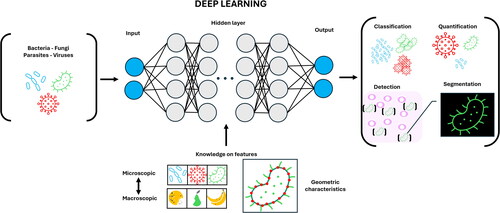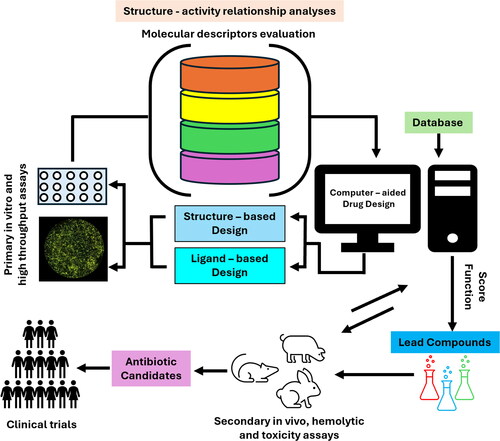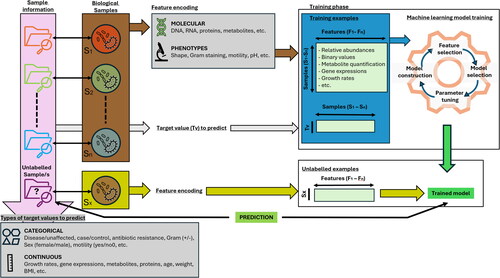Figures & data
Figure 2. A schematic diagram illustrating the process of analyzing microscopic images of microorganisms using deep learning techniques, focusing on the assessment of their geometric properties and macroscopic resemblance.

Figure 3. Computer-aided drug design, expansive databases are harnessed to sieve through and identify key pharmacological attributes that determine the functionality and efficacy of compounds. Regardless of the methodology employed, the resultant data form the cornerstone for devising a suite of innovative compounds. These novel entities undergo rigorous testing, with the ensuing results providing fresh insights into their pharmacological profiles. This iterative cycle continues, refining the compounds through successive stages until a robust scoring algorithm yields prospective antibiotic agents. These optimized candidates are then subjected to critical evaluation, examining their in vivo efficacy and safety profiles. The frontrunners that emerge from this meticulous process stand as strong contenders for advancement into clinical trial phases.

Data availability
The data supporting the findings of this study are available from the corresponding author upon reasonable request.

